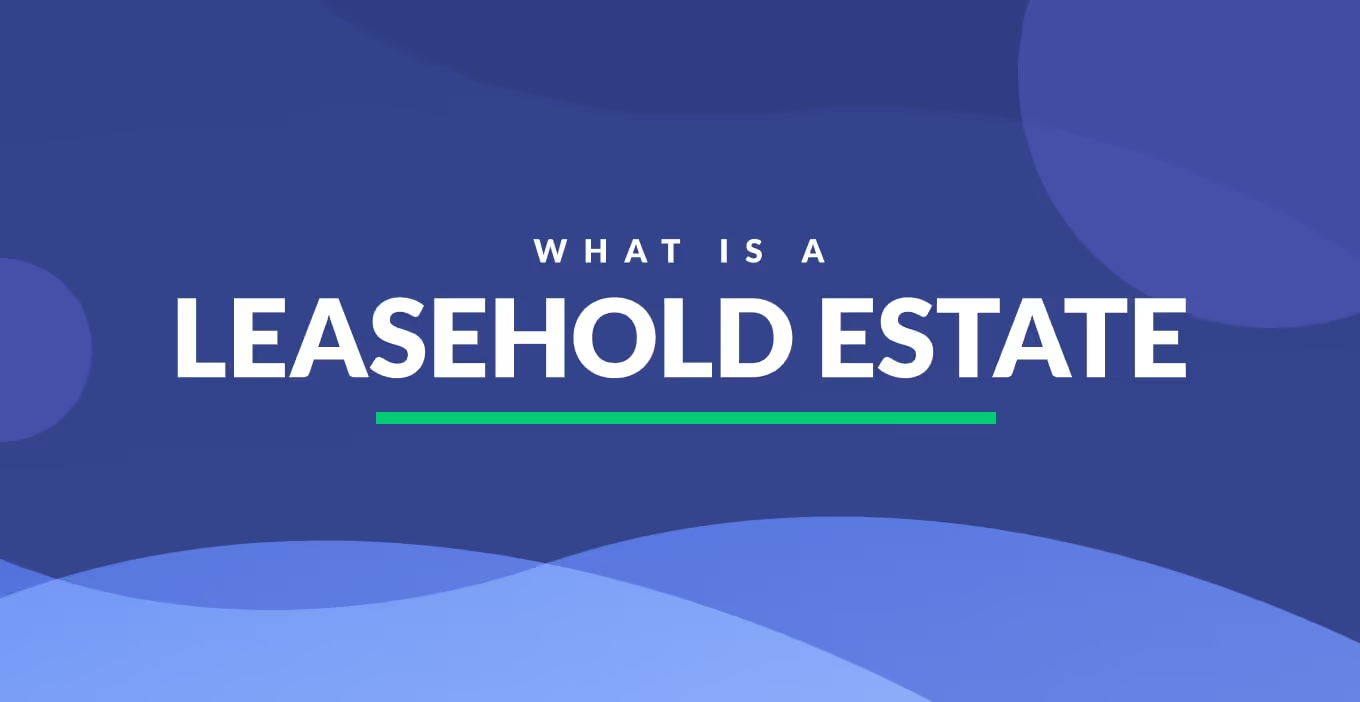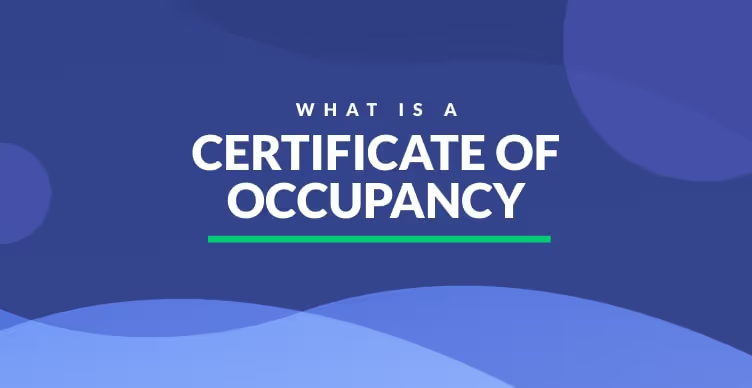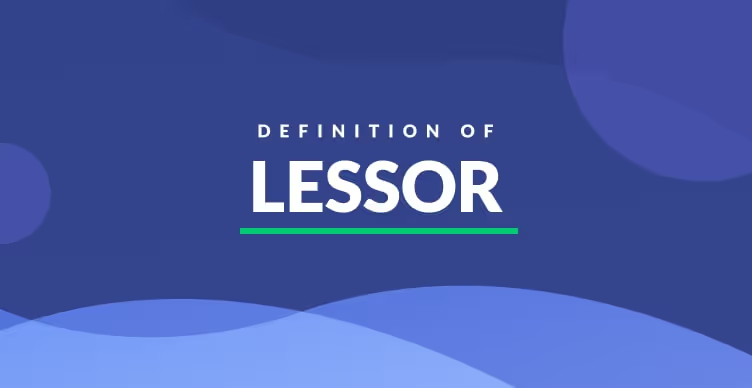Let's pretend you're a real estate investor and someone asks you what a leasehold estate is. Are you likely to know what it means?
It might be easy to pretend while you're in conversation with someone, but that doesn't work when your money and time are at risk because of a deal.
The success of real estate investing depends on your understanding, knowledge, and willingness to learn more. With that, you can enhance profitability and reduce your risks. You can see red flags more clearly, understand how costly they could be, and choose a better or more profitable property.
If you're unsure what a leasehold estate is and are curious about how it could affect your investments, continue reading.
What Is a Leasehold Estate?
A leasehold estate allows the tenant to take possession of a real property for a period of time. If you're a landlord, you rent property to your tenants and have a leasehold estate.
Leasehold estates often vary based on the property owner and building or space. Some might last a few days or years. With that, tenants could have different rights for leasehold estates. Estate leaseholds could fall into four categories, as well.
As the landlord, you create an agreement that claims the tenant pays rent each month to have a temporary right to use the property as they want. Ultimately, the tenant remains in good standing and must pay rent each time it is due.
If one party doesn't follow through, possession can be overturned from the tenant back to the landlord. In most cases, the tenant has an extended time frame to use it, such as six months or one year. The leased property is a legal estate, and the leasehold estate could be bought/sold on the open market.
Therefore, a leasehold estate refers to various things.
Types of Leasehold Estates
There are various types of leasehold estates out there, and it is crucial to understand the specific characteristics of each one. For example, you have a tenancy for [specified] years, tenancy at will, estate at sufferance, and a periodic tenancy option.
Estate for Years
The estate for years is a written contract where the details are explicitly spelled out. This includes the duration of time the person resides in the property, which could be an extended period. With that, the payment amount expected is included.
A leasehold estate for years is sometimes called a fixed-term tenancy. This means that the written lease agreement is only for real property and lists the beginning and ending dates.
With this leasehold agreement, the contract might last for one week or a year but is definitely a fixed period. Here, the person may occupy the property for the duration. After the estate for years or fixed-term tenancy is up, there is often an option to renew, but that doesn't always happen.
Periodic Tenancy
Sometimes called an estate from period to period, a periodic tenancy indicates that the renter's time is contracted for a time frame that isn't specified, and there's no expiration date. The terms of this rental were specified for a particular time frame, but the end date continues on and on until the renter or owner provides a notice to terminate.
This is similar to a lease because the end date is completed, but the renter can continue occupying the space because it automatically renews unless the renter/owner decides to terminate the agreement.
With an estate from period to period, it could be an oral lease for the property for a specified period.
However, when the specific period of time is over for the property, either party must offer a notice to quit.
Estate at Sufferance
A tenancy at sufferance means that the original lease expired, but the renter doesn't want to vacate the property. Therefore, he is staying without the consent of the owner or landlord.
Usually, an estate at sufferance means that the owner must start eviction proceedings. However, when the landlord accepts payment once the lease expires, it is considered a month-to-month lease.
Therefore, the tenant has a right to occupy the property and got the landlord's permission through the payment being received.
With that said, a leasehold estate at sufferance means that the landlord cannot get paid so that he or she can take back possession of the property later.
Estate at Will
A tenancy at will is one type of leasehold estate that could face termination at any given time by the landlord or tenant. Based on common law, no contract must be signed by the lessee or lessor and doesn't specify a length of time that the tenant uses the rental. With that, there are no specifics about payment. Ultimately, this agreement is governed by state law and has different terms.
The tenant or landlord can occupy the property or leave with no prior notice.
You can also have an estate at will if the tenant wants to move in immediately but can't negotiate a lease. However, it terminates when the written lease is presented. If the lease fails to get created, the tenant must move.
Leasehold Improvements to the Lease Agreement
Once the lease agreement is finalized, the lessee (tenant) uses the space for the purposes allowed in the lease. They may work on ceilings, floor space, plumbing, and anything else that helps with leasehold improvements. Those are recorded as fixed assets on the balance sheet of the landlord or lessor.
Both the tenant and landlord must agree on what is put in the lease for the leasehold estate improvements on the property. Depending on the contract, the landlord or tenant might pay for the renovations. Sometimes, landlords agree to pay to entice new tenants to sign the lease.
Example of a Leasehold Estate
Leasehold estates are typical for brick-and-mortar retailers. Best Buy Co. is a great example. It leases most of its buildings to make improvements that suit the aesthetic design and functionality needed for the property.
Rent expense uses the straight-line basis to end the initial period of the lease term. Any differences between the rent payable and straight-line expenses are deferred as rent.
Leasehold Interest
A leasehold interest is the contract where an entity or individual (lessee) leases land from the owner or lessor for a specified period of time. That way, the tenant has exclusive rights to use and take possession of the property or asset for that time.
You have four types of leasehold estates and interests, including periodic tenancy, tenancy for years, and the others.
This often refers to the ground lease and lasts many years. For example, you may lease a lot and take ownership for 40 years, deciding to build property on the grounds. Then, you rent it out and earn rental income while paying the owner to use the lot.
With such things, it's better to get a written agreement that looks similar to the tenancy for years lease.
What's the Difference Between a Leasehold Estate and a Freehold Estate?
A freehold estate is also part of real estate, but it's not the same as a leasehold estate.
The big difference here is that a freehold estate gives exclusive rights for unlimited time frames. Depending on the type of leasehold estate, there's a specific end/beginning to consider.
Conclusion
A leasehold estate is anything that can be leased, such as a property, building, or unit within a building. The type of leasehold estate you need depends on your goals.
It's important to understand what a leasehold agreement is and how it affects the real estate you buy or sell. Generally, the real estate could be residential or commercial. You can buy/sell real estate more confidently now that you have a better understanding of the term.
Frequently Asked Quesitons
What Is A Leasehold Estate?
A leasehold estate is a legal document that gives the tenant the right to take possession of real property for some period of time. These documents vary in terms of the rights given to the tenant, as well as the period of time that the tenant is going to be occupying the property.






.svg)
.svg)

